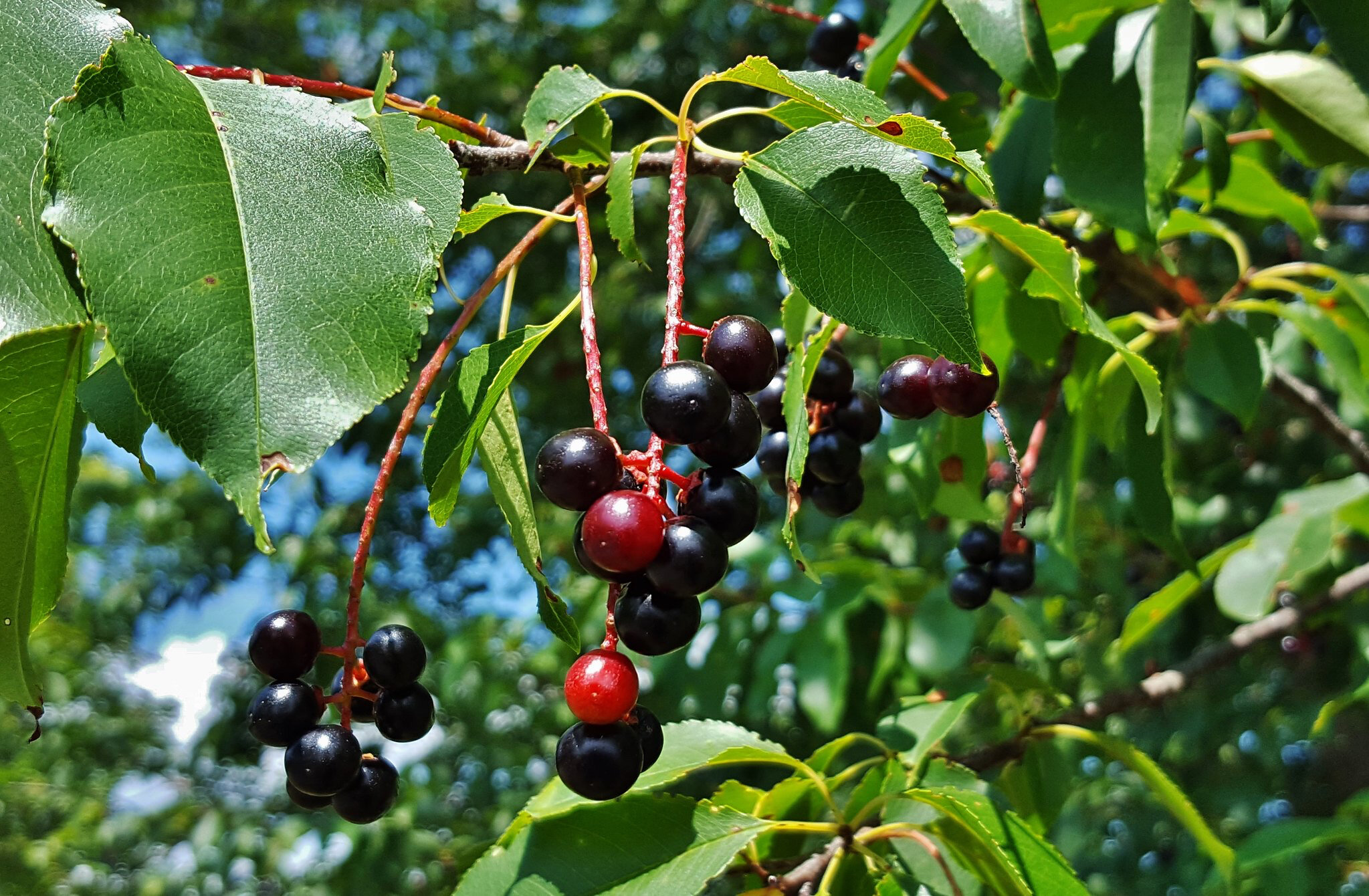Black cherry
(𝑷𝒓𝒖𝒏𝒖𝒔 𝒔𝒆𝒓𝒐𝒕𝒊𝒏𝒂)
Conservation Status: No current status rank in Maine
Photo Credit: Matthew Beziat/Flickr
Facts: Black cherry can be found in floodplains, forests, wetlands and anthropogenic (manmade or disturbed) habitats. They have a snake-like trunk with a look of burnt potato chip bark. The bark of twigs and leaves have a distinctive unpleasant smell when scratched or crushed, as hydrocyanic acid is released. White 5-petaled flowers are numerous in the end of May/early June. Black cherries produce an abundant amount of seeds, which allow seedlings to establish quickly following disturbances, such as fires and logging. The cherries are an important wildlife food source, especially for songbirds and gamebirds, which provides for long-distance seed dispersal.
Black cherry is broadly dispersed throughout Maine and is one of our State’s most valuable timber trees, although not abundant in sufficient size, with uses in furniture and cabinet making, interior finishing, woodenware, tools, fence posts, toys, scientific instruments, crafts, veneer and plywood. Here in Maine it is also appreciated as firewood due to its high heat value and pleasant odor. Eastern tent caterpillars and a common fungus known as black knot are common threats to this species in Maine.
Interesting Facts: Black cherries are commonly used by people to flavor rum, brandy and wine, and are often referred to as rum cherry. Historically, the inner bark was used as a cough remedy, tonic and sedative. Land owners with grazing livestock need to be cautious, as wilted leaves and other parts of the plant can be poisonous to some ruminants. Interestingly, white-tailed deer can graze the leaves without harm.
Sources: https://gobotany.nativeplanttrust.org/species/prunus/serotina/, https://plants.usda.gov/plantguide/pdf/pg_prse2.pdf, https://www.maine.gov/dacf/mfs/publications/handbooks_guides/forest_trees/pdf/black_cherry.pdf, 359eb1ddd9dd6eadf1e9240575187562-Black Cherry.pdf

